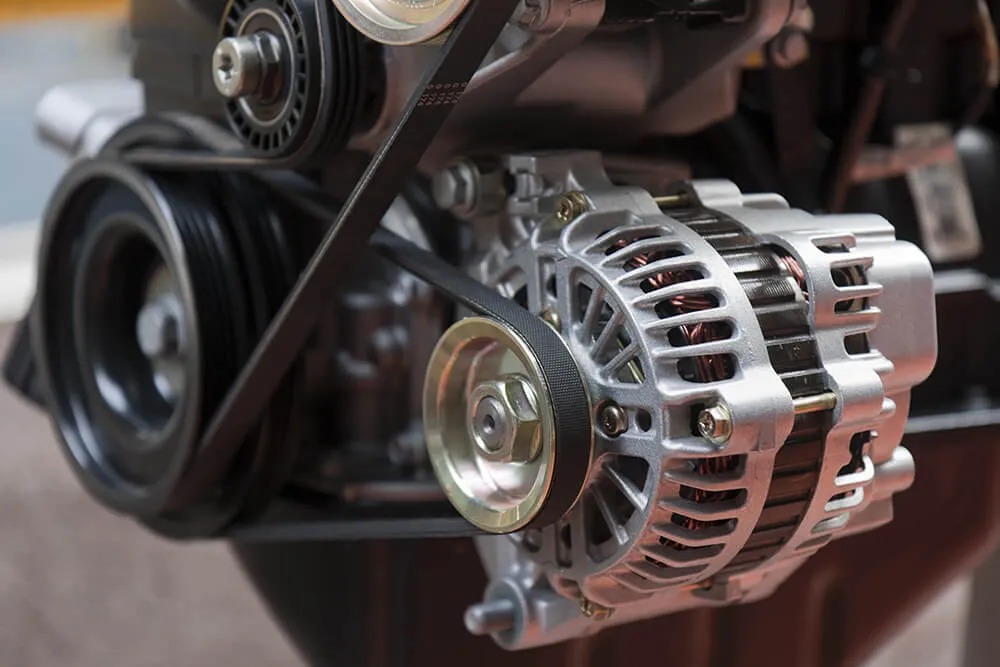During the winter months, the strain on your car’s electrical system is heightened due to the cold temperatures and increased usage of components like the heater, defroster, lights, and windshield wipers. One of the most crucial parts of your electrical system is the alternator, which is responsible for charging the battery and powering the vehicle’s electrical components while the engine is running. A failing alternator can lead to a host of issues, from a dead battery to complete electrical system failure, which can be particularly problematic in cold weather. Understanding the signs of an alternator failure and knowing what to do can help you stay prepared and avoid being stranded in freezing temperatures.
1. Signs That Your Alternator Is Failing in Cold Weather
Before you find yourself stuck in the cold, it’s important to recognize the symptoms of an alternator failure. If your alternator is starting to go bad, it may give you several warning signs:
- Dimming or Flickering Lights: If your headlights, dashboard lights, or interior lights flicker or become dim, it could indicate that your alternator isn’t providing consistent power.
- Battery Warning Light: Most vehicles have a battery light on the dashboard that will illuminate when there’s an issue with the alternator or charging system. If this light comes on, it’s time to get your alternator checked.
- Electrical Issues: Malfunctioning electrical components like the radio, power windows, or windshield wipers can be a sign that the alternator isn’t supplying enough power.
- Slow Starting or Failure to Start: If your car struggles to start or doesn’t start at all, it could be a result of the alternator not charging the battery properly.
- Unusual Noises: A failing alternator can sometimes cause grinding or whining noises due to worn-out bearings or internal components.
- What to do: If you notice any of these signs, it’s best to have your alternator checked by a mechanic as soon as possible. Ignoring the issue can lead to a dead battery and a breakdown, especially in cold weather when your vehicle needs more electrical power.
2. What Happens When the Alternator Fails in Cold Weather?
When your alternator fails, the battery is no longer being charged while you drive. As a result, the battery’s charge will begin to deplete, and you’ll eventually run out of power for your car’s electrical components. In cold weather, the strain on the alternator is increased due to the higher use of the heater, defroster, lights, and other electrical systems, so a failing alternator may lead to quicker battery depletion.
- What to do: If you experience an alternator failure, the first thing you should do is turn off any non-essential electrical systems, like the heater, lights, or radio, to conserve the battery. This will help extend the life of your remaining battery charge until you can get to a mechanic or find a safe location.
3. Jump-Starting the Battery
If your alternator fails and the battery has lost its charge, you may be able to jump-start your car to get it running again, but keep in mind that the alternator will not be able to recharge the battery if it’s already malfunctioning. Jump-starting the car will temporarily power the electrical system, but you’ll need to replace the alternator or have it repaired as soon as possible.
- What to do: If you’re able to jump-start your car, drive straight to a mechanic or service station without turning off the engine. This will ensure that the battery doesn’t lose its charge again before you can get the alternator replaced or repaired. Keep the car running to avoid a second failure.
4. Stay Prepared for the Cold
Cold weather can accelerate the wear and tear on your alternator. The increased power demand, combined with thickened oil and other components struggling in lower temperatures, puts extra strain on the alternator. To prevent your alternator from failing in cold weather, consider the following steps:
- Battery Maintenance: Since the alternator and battery work together to power your car’s electrical system, it’s important to maintain your battery. Cold temperatures can cause a battery to lose charge more quickly, so keeping it in good condition ensures the alternator doesn’t have to work as hard.
- Regular Inspections: Before the cold weather sets in, have your vehicle’s alternator and battery inspected by a mechanic. They can check the charging system, clean any corrosion, and replace worn-out parts before you’re left without power.
- Check Belts and Connections: The alternator is driven by a belt, and cold temperatures can cause rubber belts to become brittle and break. Make sure the belt and connections are in good condition to avoid unexpected issues.
5. What to Do if Your Alternator Fails in the Cold
If you experience alternator failure during winter, you may be stuck in freezing temperatures. Here’s what to do to minimize the impact and get the help you need:
- Turn off unnecessary electrical systems: As mentioned earlier, shutting off any non-essential electronics can help preserve battery power and avoid draining the remaining charge.
- Seek help: If you can’t jump-start the car or make it to a mechanic, you’ll need to call a roadside assistance service to get your car towed to a repair shop. Being stranded in cold weather can lead to further complications, so it’s important to get your vehicle checked as soon as possible.
- Be mindful of the cold: If you’re stuck outside in freezing temperatures, it’s important to stay warm. Keep your car running if possible, but be aware that a dead battery and failing alternator could leave you without heat. Consider layering up with extra clothing and having an emergency kit on hand.
Keep Your Alternator in Good Condition This Winter
Winter weather can place extra strain on your car’s alternator, so keeping up with regular maintenance and addressing any early signs of failure is key to avoiding unexpected breakdowns. By staying vigilant about your vehicle’s electrical system, you can reduce the risk of alternator issues during cold weather. If you experience any signs of a failing alternator, don’t delay—take action immediately to prevent further damage and ensure your vehicle is ready to face the winter conditions.

